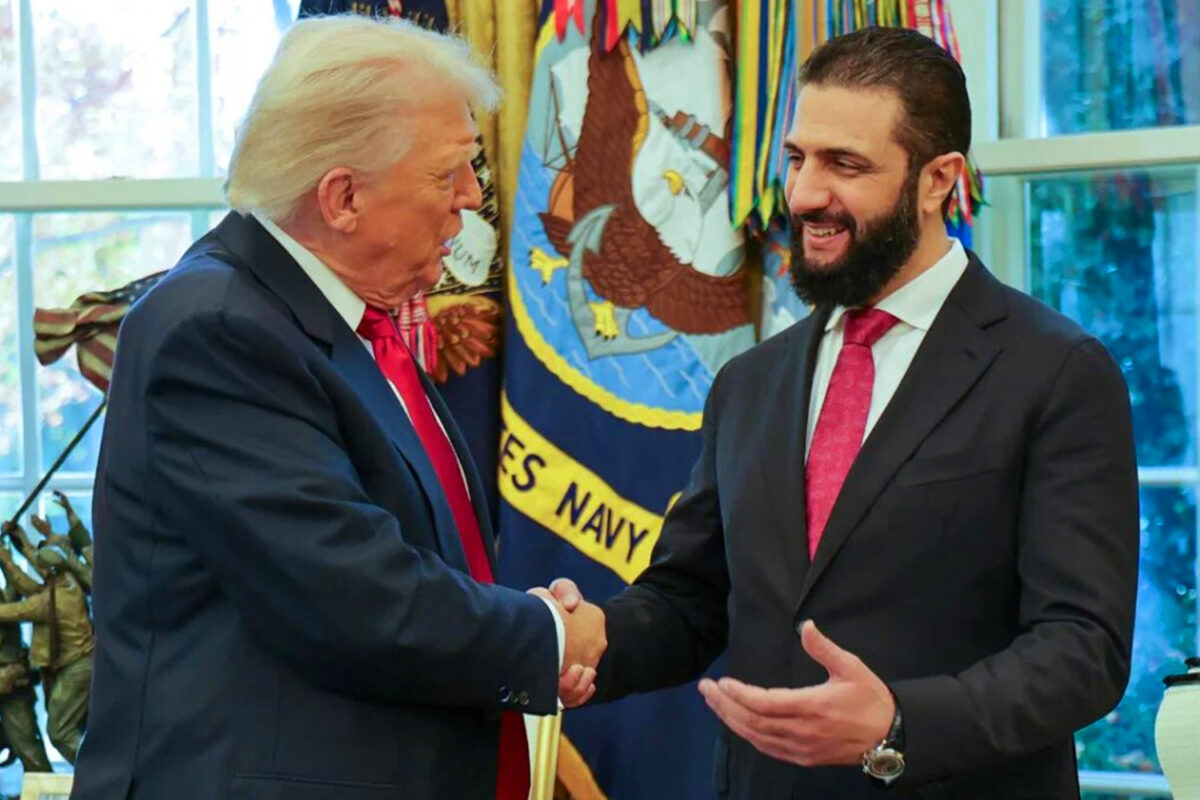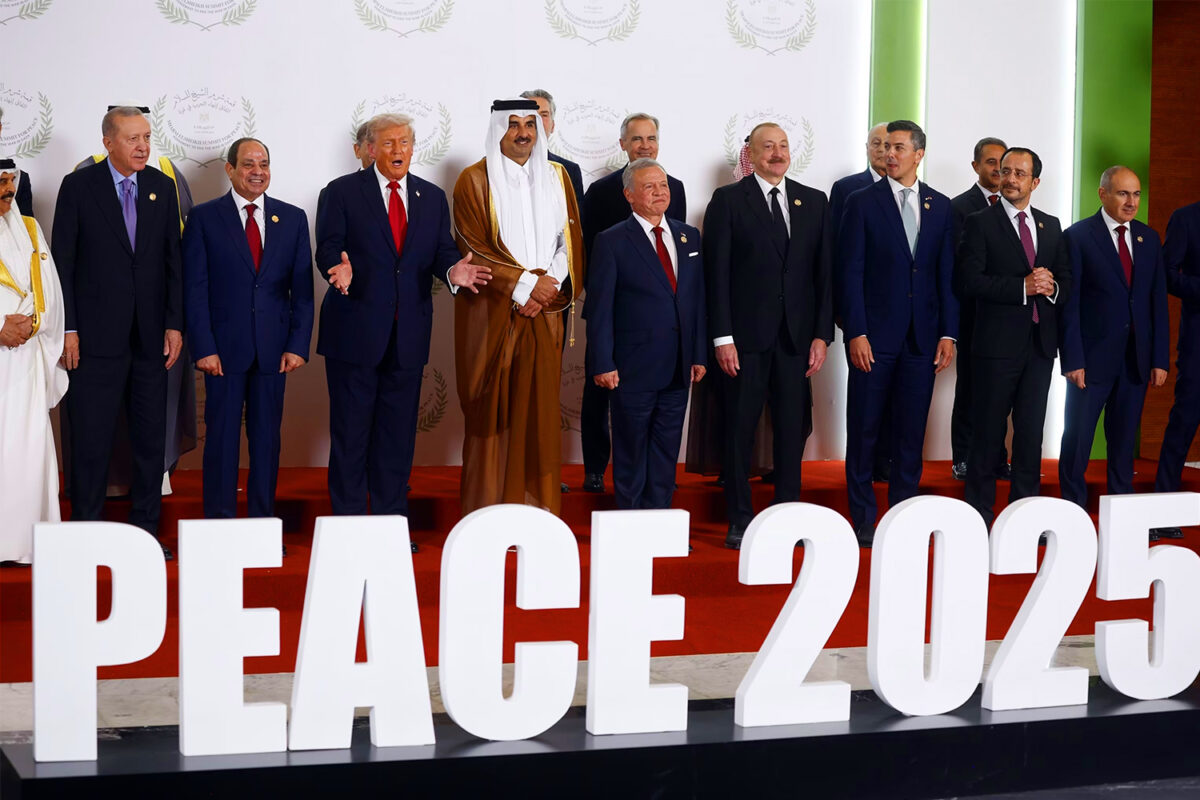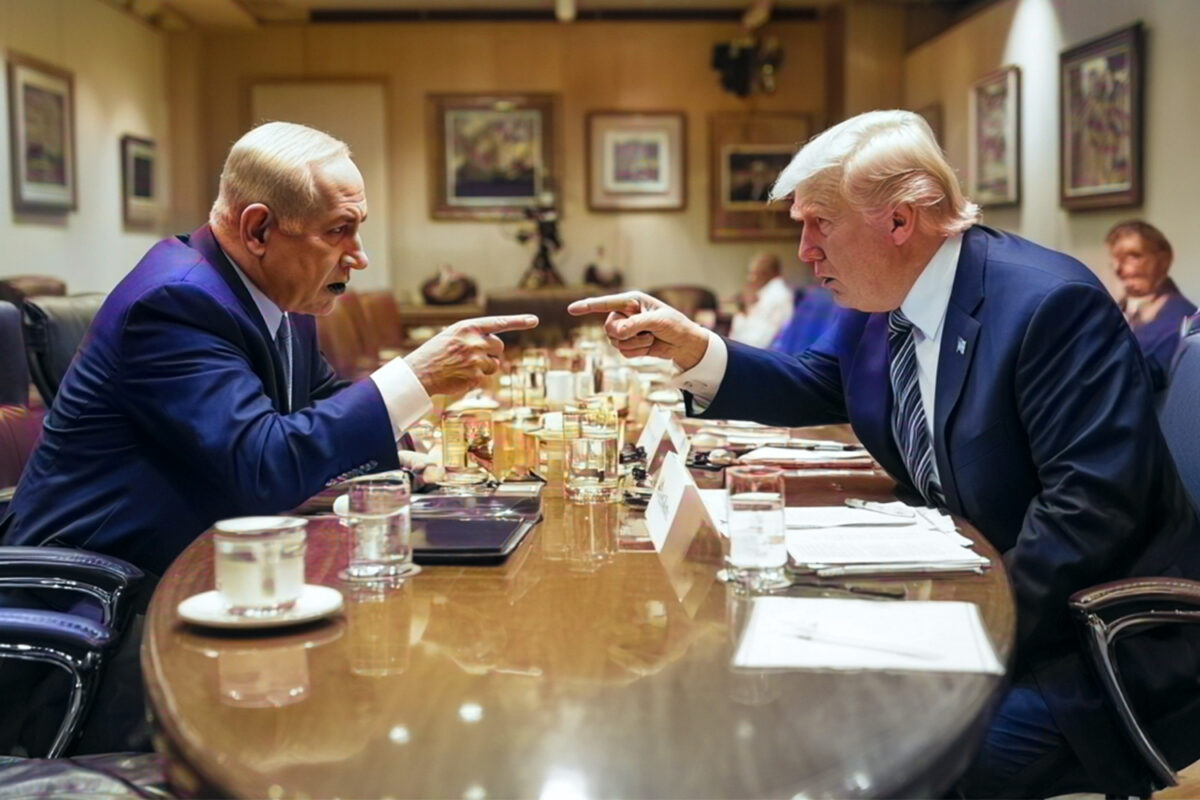1. Israel’s Military Invincibility Has Taken a Big Knock – Benjamin Netanyahu has built a career out of presenting himself as the strongman of Israeli security. But for 12 days Israel faced the unprecedented scenario of missiles raining upon the country. Despite Israel’s surprise attack and success, Israel struggled to stop the barrage of attacks from Iran. Images of Israelis going underground and taking refuge in bunkers are all over social media. Many Israelis overwhelmed the countries airports as they fled abroad to safety.[1]
Iranian strikes damaged Israeli oil infrastructure, disrupted Ben Gurion Airport, and led to civilian casualties—despite the Iron Domes protection. Iran also successfully struck Israel’s industrial hub Haifa and Tel Aviv, the national capital, was also not spared. The psychological trauma and evacuations strained Israeli society.
2. Iran’s Rhetoric Meets Reality – Iran has for long argued it has a powerful military that can stand up to the west and Israel. For a long time Iran has put out images of the latest fighter jets, battleships and missiles, but when Israel launched its surprise attack it became clear that this was all rhetoric.
Israel’s spy network was able to sabotage Iran’s defences in its surprise attack and this is what allowed Israeli jets to fly into Iran and carry out its bombing campaign. Israel’s intelligence capabilities also saw it carry out a highly effective assassination campaign that saw the IRGC leadership assassinated, and many nuclear scientists also killed in car bomb attacks. Iran was clearly caught out and placed on the back foot by Israel’s initial onslaught. It was unable to halt Israel’s air campaign that targeted its nuclear sites, ballistic missile facilities and energy infrastructure.
In response Iran was able to overwhelm Israel’s missile defence system and whilst up to 90% of Iran’s missiles were intercepted, according to Israeli officials, the 10% Israel failed to deter had a devastating impact and caused enough damage to worry Israel for 12 days. The large-scale sirens, school closures, evacuations, and visible damage to residential infrastructure targets caused national anxiety.
Iran’s missile campaign was symbolically aggressive but strategically contained. It showcased Iran’s ability to launch a massive barrage—but also exposed its technological lag and vulnerability to advanced missile defence systems. The campaign failed to shift the strategic balance or weaken Israel’s military posture, after 12 days of war, Iran achieved a public relations victory, but the strategic balance remains the same between both Iran and Israel.
The large-scale sirens, school closures, evacuations, and visible damage to residential infrastructure targets caused national anxiety
3. The Iron Dome Turned out to be Foam – Israel and the US have for long promoted Israel’s missile defence system as impenetrable. Whilst Israel’s missile defence system has a high success rate against rockets and mortar from occupied Palestine, the rate of missiles that were hitting Israel highlights that against determined opposition Israel’s defence system is not what its proponents have for long presented.
Missile defence systems, despite what many argue, do not have a high degree of success. They cannot stop every missile, and this percentage increases when one has multiple layers of systems trying to work in tandem. It is extremely difficult to stop salvos of 50 to 100 ballistic missiles at one time as this would overwhelm any system. Dr Marion Messmer, a senior research fellow of security studies at Chatham House, said Israel’s air defences may not be as effective as many believe. Speaking of the Iron Dome in particular, she told The Independent, it has “…better PR than is actually warranted. At the end of the day, it’s an air defence system. It’s a very effective air defence system. But no air defence is completely unbreachable.”[2] The main cause of the most significant breach to Israel’s air defence in years, was the sheer overload of Iranian missiles which left it overwhelmed.
4. Israel Cannot Beat Geography – The distance between Tel Aviv in Israel and Tehran in Iran is nearly 1,000 miles. This geography, no matter how technologically advanced and despite the rhetoric, this would limit the best air forces. Multiple things needed to come together for Israel to traverse this distance. Israel needed US refuelling capabilities and Israel needed safe airspace over Syria and Iraq. The 1,000-mile supply line was a major vulnerability for Israel.
Israel successfully carried out targeted precision strikes that included military depots, IRGC command centres and radar facilities. Israel successfully conducted cyberattacks on Iranian air defence systems and communication networks. Israel was able to coordinate with the regional Gulf Arab states, especially Saudi Arabia and the UAE, who allowed overflight support. Israel managed an air campaign that crippled Iran’s top-tier assets while avoiding prolonged occupation or massive escalation.
However, the fact that Israel turned to the US after 5 days, shows Israel could not achieve more, it needed external help to target Iran’s nuclear program. Despite the ceasefire agreement, even Israeli officials have admitted they will never truly know how effective their attack was and if it even dented Iran’s nuclear programme.
5. Israel Failed at Regime Change – Israel’s attack on Iran was not just about Iran’s nuclear programme, Israel’s assault went well beyond that. Israel targeted Iran’s energy infrastructure, military facilities and regime. During the initial hours of its surprise attack, Israel wiped out Iran’s top military leaders. Soon thereafter, Israel started contacting the second- and third-tier leaders in the army, threatening them with assassination if they did not publicly announce they were distancing themselves from the regime. A Washington Post exposé estimated that more than 20 leaders in various positions of power were contacted and some senior Iranian figures received warning letters under their door, some received a phone call directly, and while others were contacted through their spouses.[3] In the end there were no defections among high-ranking members of Iran’s military or the Islamic Revolutionary Guard Corps.
6. Iran is Infiltrated by Spies – Iran and Israel have effectively been at war for three decades. Whilst they have not been engaged in direct confrontation, until now, their battle has been in the shadows though assassinations, sabotage and spying.
The clerical regime when it took power in 1979 carried out an extensive purge of the former Shah regime and those it saw as a threat. Due to this many dissidents left Iran and were given asylum by the US, Iraq and Israel. Israel saw these anti-regime rebels as tools that could be used to create instability in Iran for the clerical regime. Israel has long recruited from anti-Iranian dissident groups such as Mujahideen-e-Khalq (MEK) and Jundallah.[4]
Iran’s security forces dedicate most of their energy to maintaining the regime’s seat of power and occupying its own people.[5] This has provided Israel with fertile ground to recruit and establish a network of spies inside Iran. In a Associated Press interview with Sima Shine, the former research director of Mossad, she confirmed: “This attack is the culmination of years of work by the Mossad to target Iran’s nuclear program.”[6] Israeli agents were able to smuggle in a series of drones and missile systems into Iran, which were then used to strike numerous targets determined by a US AI model working on data provided to it by Israeli agents within Iran.
Given the long list of operations that Israel has been able to conduct in Iranian territory, it’s pretty clear that the clerical establishment has a foreign spy problem.
Israeli agents were able to smuggle in a series of drones and missile systems into Iran, which were then used to strike numerous targets determined by a US AI model working on data provided to it by Israeli agents within Iran
7. Russia let Iran Down, again – Russia and Iran are meant to be in a strategic relationship. Both countries are considered by the US to have a full-fledged defence partnership. Russia has exported defence platforms to Iran and aided its missile development program. Russia has even built a nuclear reactor for Iran. Russia constantly talks about its deep relations with Iran and has even acted as mediator between Iran and the West. In turn Iran presents its partnership with Russia as something that shows its power and should be respected in the region.
But Russia has been completely absent since Oct 7th for Iran. Iran has been attacked, its proxies have been decimated and Russia just issues statements and beyond this has not delivered for Iran. Russia has a long history of letting Iran down. Russia has even voted against Iran at the UN, it has on many occasions remained natural when sanctions were imposed upon Iran.
Russia wants to build an image that Iran is on its side and it supports it and therefore it is a power in the Middle East. But Russia has never planned to deliver on this. Despite building the Bushehr nuclear reactor, Russia has never supported Iran developing nuclear weapons — preferring regional stability.
Russia wants to build an image that Iran is on its side and it supports it and therefore it is a power in the Middle East. But Russia has never planned to deliver on this
8. China Remains a Paper Tiger – China has missed an opportunity to intervene in the Middle East, introduce itself as a new regional player and complicate the US strategy for the region. China remained silent on the 12 day war despite a comprehensive strategic partnership with Iran signed in 2020. China remains a lightweight in the Middle East.
China had the opportunity to increase its influence by intervening on the side of Iran. It could have provided a nuclear umbrella to Iran. Much like the US does with nuclear weapons in Türkiye, Germany and Italy. It did not do this, despite the Trump administration making clear its tariff strategy and global strategy is targeting China.
China needs to push-back against the US and it needs to complicate US plans in different regions, especially now that the US openly says its in a global battle with China. But China has never had influence beyond its borders in its long history and its political class have no confidence in engaging in political struggle with the US. Much like Russia, China wants the credit for supporting Iran in the Middle East, without having to ever deliver on this. Both Russia and China, let down Iran in its time of need.
Much like Russia, China wants the credit for supporting Iran in the Middle East, without having to ever deliver on this. Both Russia and China, let down Iran in its time of need
9. Is Regime Change on the Cards? – Donald Trump posted on social media during the 12 day war: “why wouldn’t there be a Regime change???!” Raising the possibility of a change in leadership in Iran.[7] Israel dreams about regime change in Iran and would love to see the back of the clerical regime. For the moment this looks unlikely as regime change would not succeed through a foreign intervention or a bombing campaign but would need the US to organise and support protests in Iran that undermine the regime. This was how the US removed the Shah back in 1979.
But for the US, the Iranian regime has proven to be useful and has even cooperated, despite all the rhetoric about Iran being an enemy. In Iraq and Afghanistan both nations are on record that they cooperated in order to bring stability to both countries. For this reason, the US sees in Tehran a regime that has proven to be useful. It’s Israel that has always pushed for war and regime change in Iran and it’s the US that has kept Israel on a leash. Demonstrations and growing protests would be indicators that regime change is US policy.
10. The Politics of Choreography – During the 12 days of war there have been a number of incidents and events that force one to question the motives and aims of the different nations that were involved. The US was in direct talks with Iran prior to the war, despite Israel being against this. Steve Witkoff, Trump’s real Secretary of State and Iran’s foreign minister have been in direct talks to come to a nuclear agreement.
Despite on-going negotiations, Israel launched a war on 13th June and prior to the US intervention on 21st June a high-ranking Iranian confirmed in an Amwaj report that the Trump administration conveyed that it did not seek an all-out confrontation. The senior source also confirmed that the targeted sites were evacuated, with ‘most’ of Iran’s stockpile of enriched uranium kept in secure locations.[8]
When US B-2 bombers crossed into Iranian airspace, Trump’s special envoy Steve Witkoff in a phone call with Abbas Araghchi, Iran’s foreign minister, made clear that the operation was a one-off and limited strictly to Iran’s nuclear program. Witkoff emphasised to Araghchi that the US still seeks a diplomatic resolution.[9] Witkof informed the Iranians in advance of the coming attack.
Then on 23th June Iran launched missiles at Al Udeid US air force base in Qatar in retaliation for the attack. Before the missiles were launched Iran gave the US advance warning such that any casualties could be avoided.[10] US President Trump thanked Iran for giving the United States notice prior to shooting missiles at its military base in Qatar, which he said made it possible for no lives to be lost. “I want to thank Iran for giving us early notice, which made it possible for no lives to be lost, and nobody to be injured,” This is not how things should look when enemies are at war with each other.
11. Where is Iran’s Nuclear Program Now? – Iran’s nuclear facilities are underground and in one case built inside a mountain. An air campaign would always have very limited impact and to end such a program would need troops on the ground who occupy the facilities and destroy it from the inside. This is not what the US or Israel did and raises questions if Iran’s nuclear program has been impacted at all.
US officials have said they dropped bunker busting bombs to the entrances of the nuclear sites and despite President Trump saying Iran’s nuclear program has been halted, according to an early Pentagon intelligence assessment of the attack, the US strikes did not destroy the country’s nuclear programme and probably only set it back by months.[11] Sources familiar with the Pentagon’s intelligence assessment say Iran’s centrifuges are largely “intact” and the impact was limited to above-ground structures. The nuclear watchdog, the International Atomic Energy Agency (IAEA) has also concluded the attack has done little to halt Iran’s uranium enrichment capabilities.
Hassan Abedini, the deputy political director of Iran’s state broadcaster, claimed the three sites targeted by the US had been evacuated a “…while ago…”, and that Iran “…didn’t suffer a major blow because the materials had already been taken out.”[12]
12. Tensions in US-Israeli Relations – The Right-wing government in Israel has been a problem for the US for over two decades. This is because they have for long put Israeli interests before US interests. This has been on full display during the last two years, with the Netanyahu government carrying out acts of genocide, expansion, assassinations and policy, despite US opposition.
Netanyahu dragged his feet for over 8 months when US president Joe Biden presented a ceasefire agreement over Gaza, during this time the Netanyahu government carried out a brutal siege over Gaza. Similarly, Netanyahu carried out the assassination of Hassan Nasrullah, the Hezbollah leader in September 2024, despite the US being against it. And now the US was forced to intervene in Iran as Israel was preparing to launch a strike against Iran that would have dragged the US into the war. The US intervened and carried out a bombing campaign that appears to have done little to halt Iran’s nuclear programme. The US intervention is looking more and more like an intervention to protect and defend Iran from Israel. This is one of the reason Trump dropped the F-Bomb when asked about Israel in a rare and open rebuke of the Zionist entity.[13]
[1] Israelis flee Iranian strikes on ‘low-profile’ yacht trips to Cyprus: Report
[2] How has Iran managed to breach Israel’s Iron Dome air defence system? | The Independent
[3] Israeli warning call to top Iranian general: ‘You have 12 hours to escape’ – The Washington Post
[4] Report: U.S., Israel Helped Train Iranian Dissidents – Haaretz Com – Haaretz.com and ‘Israeli Mossad Agents Posed as CIA Spies to Recruit Terrorists to Fight Against Iran’ – Haaretz Com – Haaretz.com
[6] How Israel pulled off its surprise attack on Iran | AP News
[7] Trump speculates about Iran regime change after US strikes – BBC News
[8] Exclusive: Iran given advance notice as US insisted attack on nuclear sites is ‘one-off’
[9] “It was a headfake”: Inside Trump’s secret orders to strike Iran
[10] Trump Says Cease-Fire Has Started Between Iran and Israel – The New York Times
[11] US strikes did not destroy Iran nuclear programme, says intelligence assessment – BBC News
[12] What we know about US air strikes on three Iranian nuclear sites – BBC News
[13] Donald Trump drops the F-bomb: Is the presidential profanity really that shocking? | Euronews




